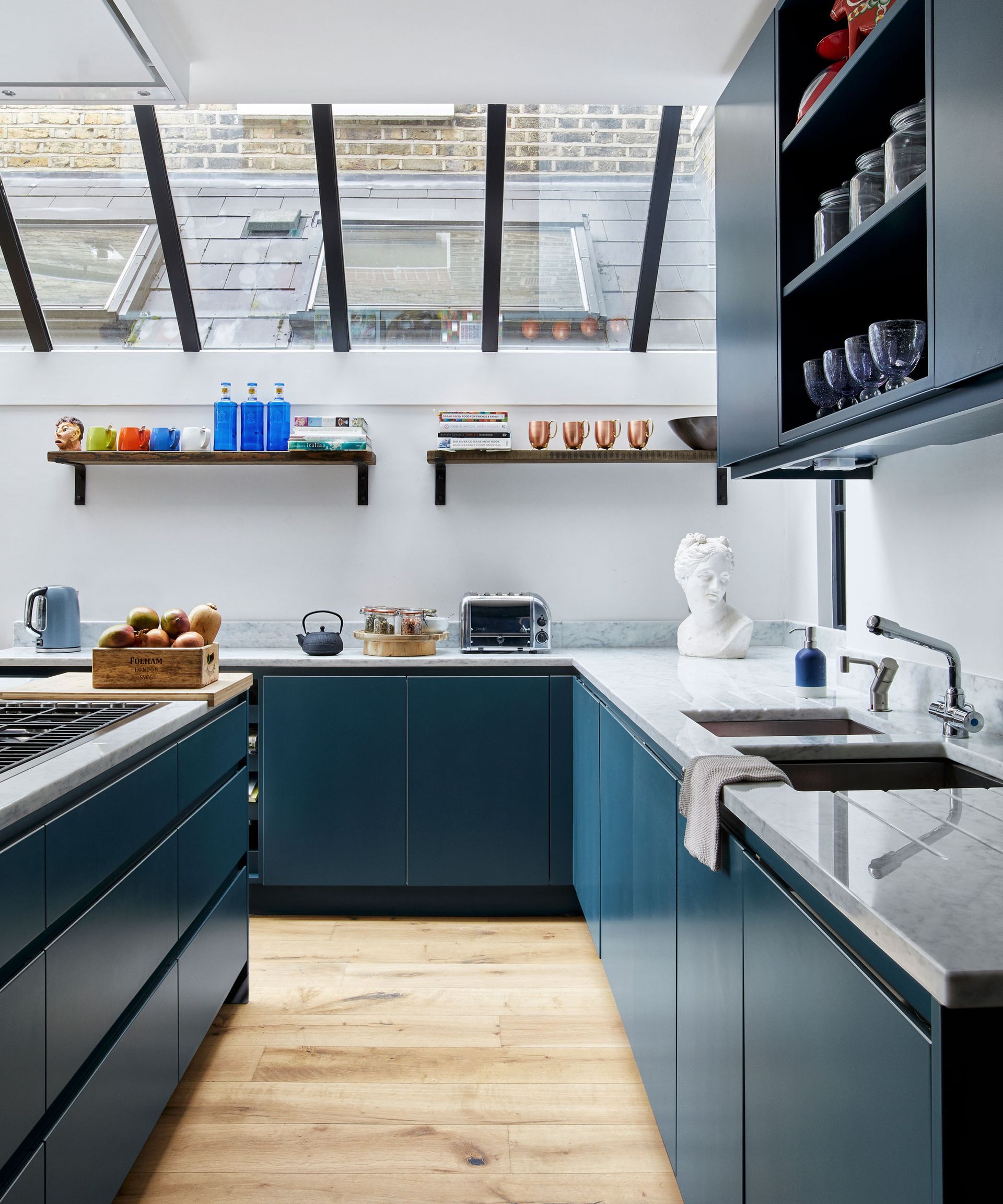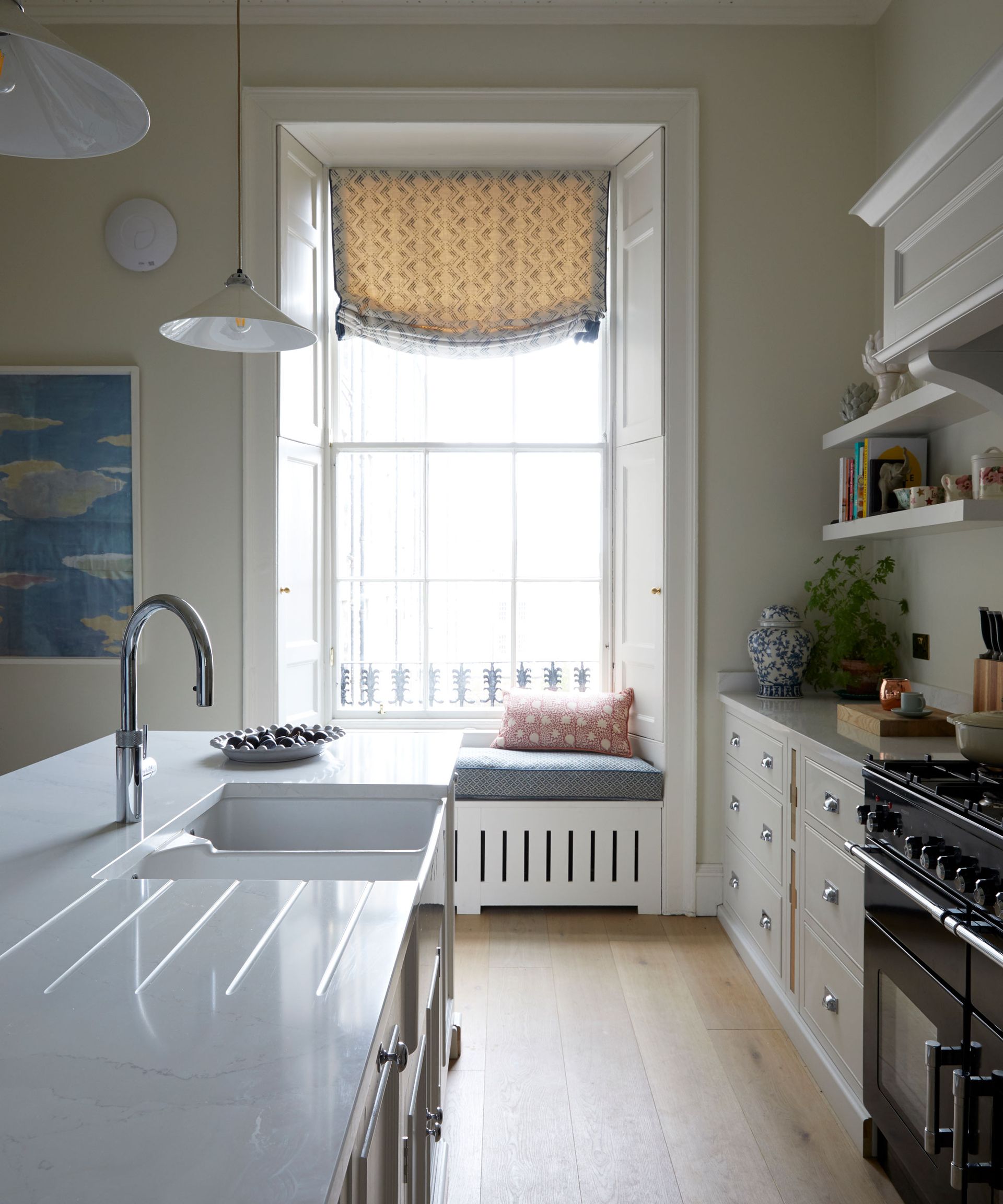'Grimy, germ-ridden fire hazards': the hidden areas of the kitchen professional cleaners say we're forgetting to clean
Cleaning professionals put the breeding grounds for germs lurking in our kitchens under the microscope
- (opens in new tab)
- (opens in new tab)
- (opens in new tab)
- Sign up to our newsletter Newsletter


The secret's out: the hidden areas of our kitchens we're forgetting to clean have been revealed by professional cleaners. Yes, we all, apparently, have untended corners brimming with germs that get overlooked time and again. Worst still, these areas are often odor-emitting – and real fire hazards.
Cleaning a kitchen isn't everyone's idea of time well spent. And we all have jobs we tend to put off, from cleaning the oven to cleaning kitchen cabinets. But what about the ones that just don't occur to us or get passed over for more obvious tasks?
From the grease-magnet vent hood to the awkward-to-reach top of the refrigerator, these are the hidden hotspots we all need to start reaching for.

1. The sticky spots where the cabinets meet the floor
According to Chris Willatt of Denver house cleaning service Alpine Maids (opens in new tab), the space between the cabinets and the floor is an area we always forget to clean.
It's a magnet for dried spills which, over time, will solidify to form a greasy, sticky film. Plus, it's an area that mice will gravitate towards to pick up crumbs from the floor below (you won't be surprised to know that one of the best ways to get rid of mice is to clean up the crumbs they come into your kitchen for).
'Underneath the cabinet is typically a small overhang right above the floor that collects dirt and grime over time,' Chris comments.
He suggests using an all-purpose cleaner with a microfiber cloth, at Amazon (opens in new tab), or a Magic Eraser scrubber, also at Amazon (opens in new tab), and thoroughly scrubbing underneath the overhang before leaving it to air dry.
2. Your greasy vent hood
From low to high!
'The next spot is the vent hood,' Chris Willatt continues. 'Over time the vent collects grease and debris that can not only look bad but can be a potential fire hazard.'
For most of us, it's out of sight and easy to forget, but it could contribute to nasty smells, too, if you don't give it a wipe down.
To clean it, he says you should actually dismantle the vent hood and soak the pieces in warm soapy water. 'After soaking for 30 minutes to an hour, use steel wool to scrub the vents, Chris says. 'Rinse with warm water and dry thoroughly before placing it back above the stove.'

3. The fire hazard under stovetops
'One area many people forget to clean is underneath their stove top,' comments Sara of Confessions of a Cleaning Lady (opens in new tab). 'Stovetops with burners lift so you can clean underneath them where crumbs and grease can fall and get trapped.'
Sara points out that this is a very important area to clean because if neglected it can be a fire hazard. If you're cleaning the oven and waiting for your oven cleaner to work its magic, this, along with cleaning stove grates, is a good job to do while you wait.
Sara recommends cleaning it by removing the burners and burner covers and then lifting the top, which will open like the top of a chest or toolbox. Then, simply wipe up crumbs and spills, being careful of electrical wires connected to the burner elements. Clean stove burners thoroughly before placing them back.
4. The stinky garbage disposal gasket
For Audrey Schenkel of Practically Perfect Cleaning & Organizing (opens in new tab), it's cleaning the garbage disposal, and specifically, the garbage disposal gasket. She says we clean the sink but often forget to pop the black gasket out for cleaning with vinegar and deodorizing.
'The best way to clean it is to remove it and place it in a small dish filled with vinegar and hot water to soak while cleaning other areas of the kitchen,' Audrey explains. 'Then, when you're ready to clean the kitchen sink, start by scrubbing the gasket with a small brush and rinse it off. Pop it back in when you're done cleaning the sink bowl.'
5. The grimy top of the refrigerator
If you have a freestanding refrigerator, dust and crumbs and grime easily accumulate on the top, which makes it difficult to clean. When cleaning a refrigerator's interior, tackle the top too. This is best done with run a damp cloth dipped in warm, soapy water, then wiped over the top and exterior.

6. The burnt-smelling, fire hazard of a toaster
'The toaster is another area that is easily forgotten when cleaning the kitchen,' says John Larson from Best Cleaning Tools (opens in new tab). 'Crumbs can accumulate in the bottom of the toaster and create a fire hazard.'
Make sure it's unplugged before cleaning a toaster, giving the exterior a wipe before reassembling and plugging back in.
7. The debris collecting side edges of your stovetop
The small crevice where the edge of an stovetop and the kitchen countertop meet rapidly collects grime and crumbs from cooking. A quick solution is to gently run a toothpick along the edge to remove debris, before wiping down with a microfiber cloth.
What is the germiest area of the kitchen?
The kitchen sink and your dishwashing sponge are two of the key areas known for attracting the highest number of germs. Countertops and cutting boards also need regular cleaning to keep your kitchen healthy and hygienic.

Millie Hurst is Section Editor at Homes & Gardens, overseeing the Solved section, which provides readers with practical advice for their homes. She has been in the world of digital journalism for six years, having previously worked as Senior SEO Editor at News UK both in London and New York. She joined the Future team two years ago, working across a range of homes brands. Millie formerly worked as Senior Content Editor at Ideal Home, taking care of evergreen articles that help and inspire people to make the most of their homes and outdoor spaces. Millie has a degree in French and Italian and lives in North London.
-
-
 Robert Pattinson just bought a Spanish Colonial-style home – with an interior designer past
Robert Pattinson just bought a Spanish Colonial-style home – with an interior designer past'The Batman's' Robert Pattinson and Suki Waterhouse purchased the Jeff Lewis-designed Hollywood Hills estate for $5.3 million
By Megan Slack • Published
-
 7 expert-approved methods to remove candle wax from carpet
7 expert-approved methods to remove candle wax from carpetCleaning professionals share their tips on how to remove candle wax from carpet
By Millie Hurst • Published

